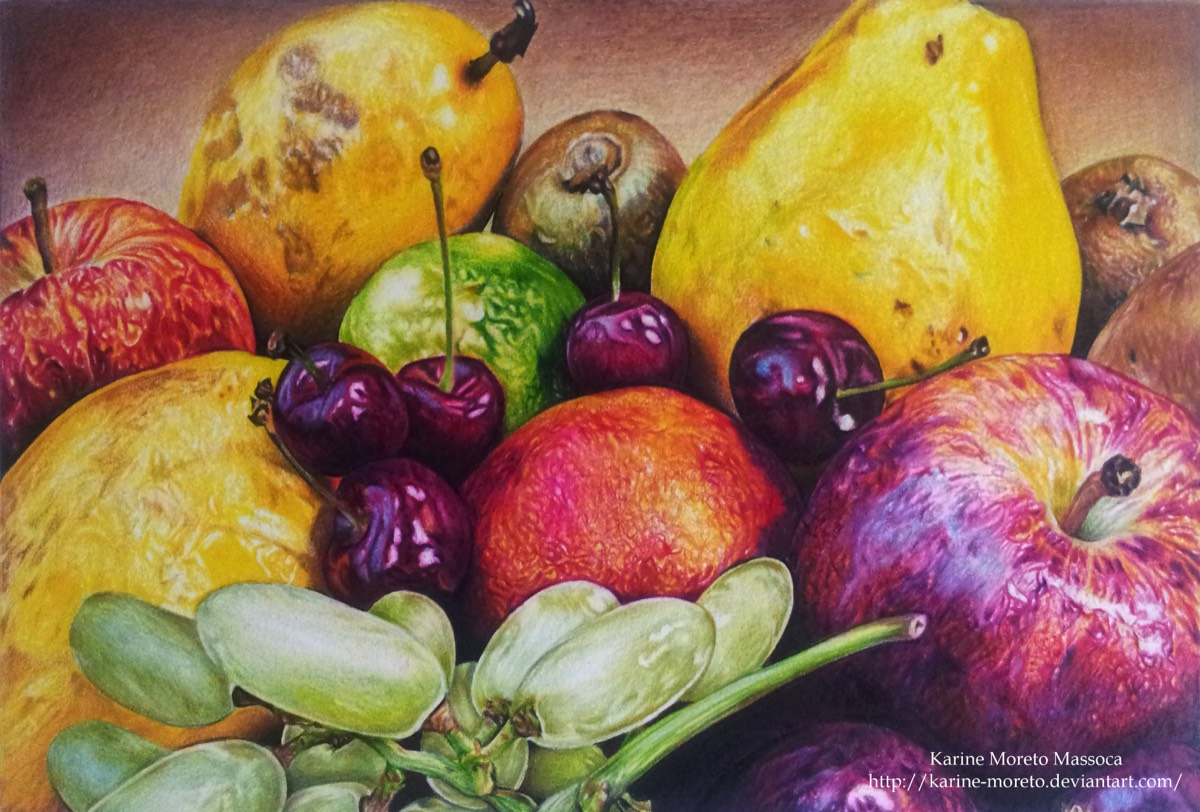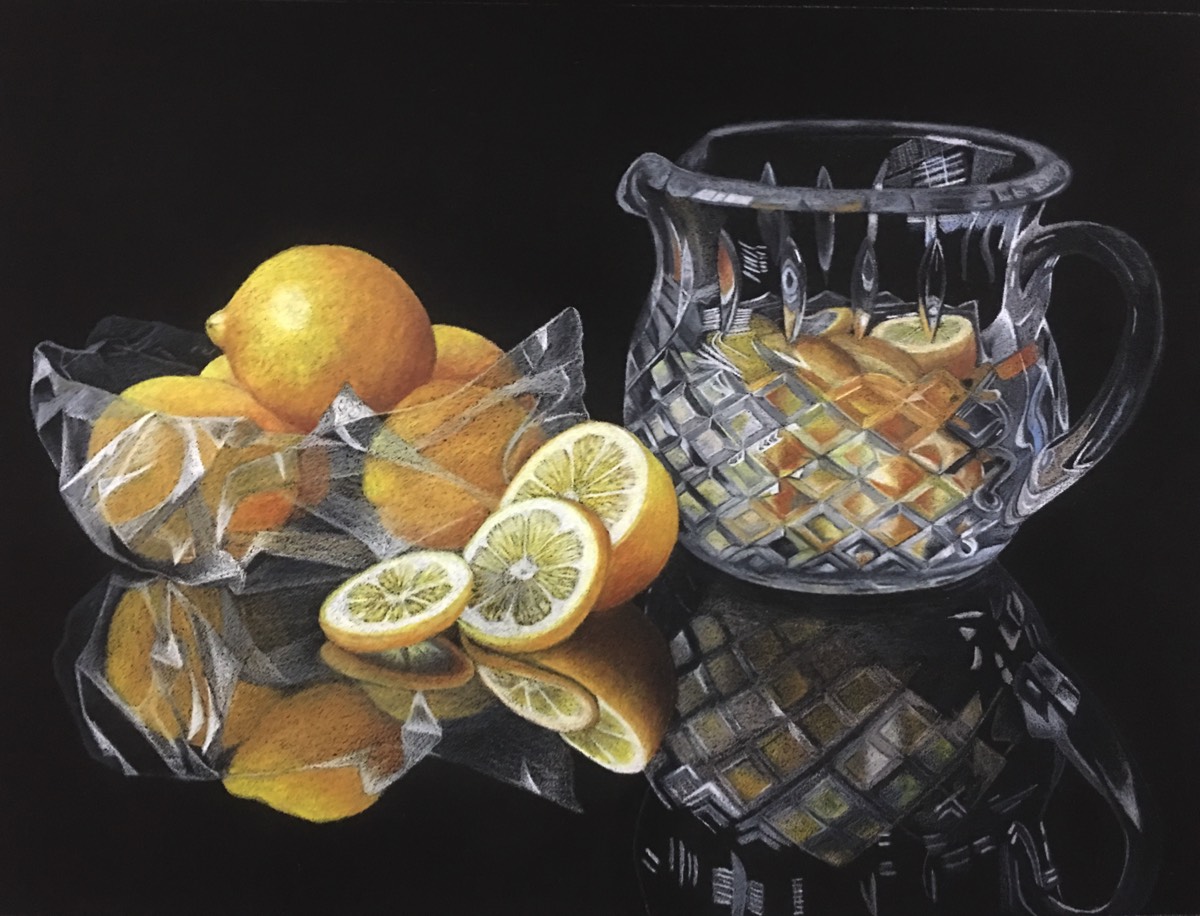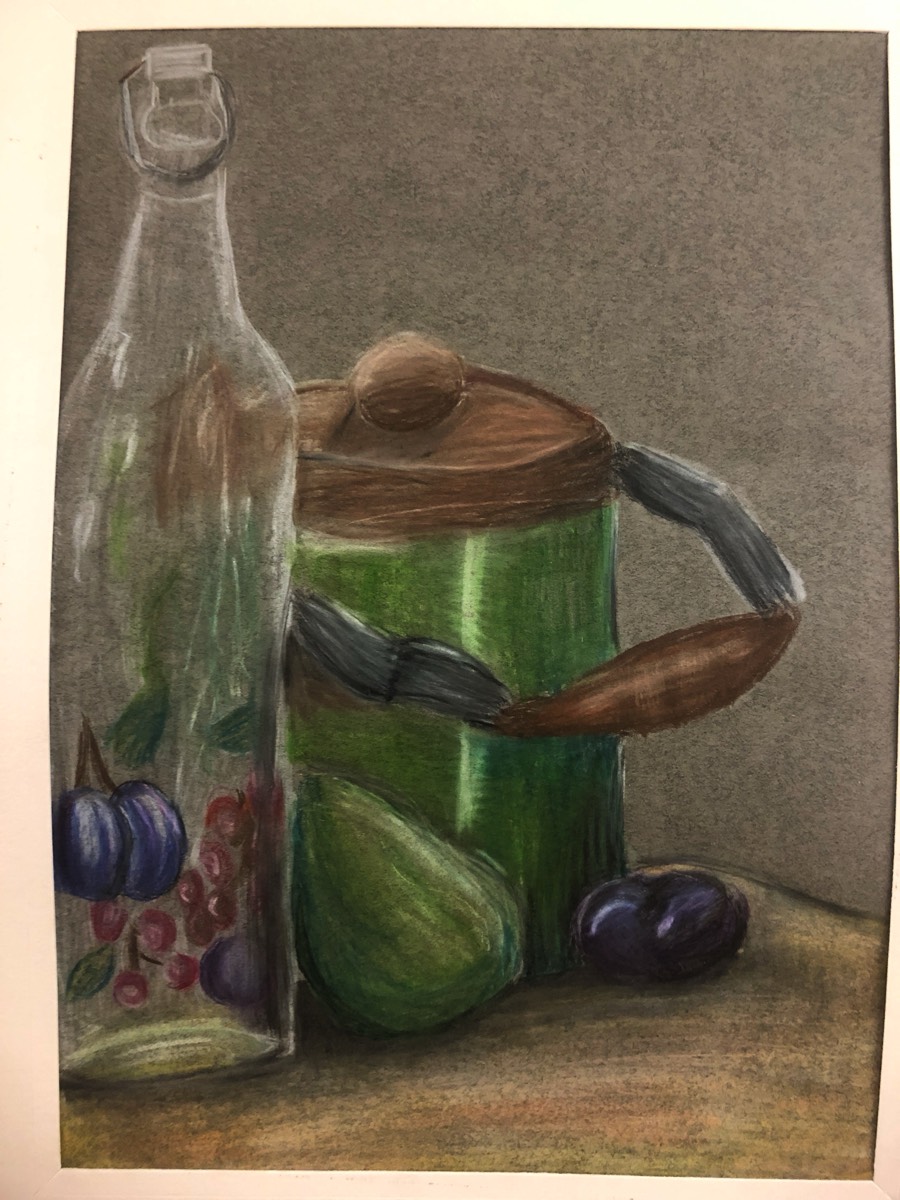Still Life Project

Project Description
In this project, you will delve into the world of still life drawing using color pencils. A still life composition involves arranging objects in a deliberate manner to create an engaging and visually appealing scene. Through this project, you will learn to observe and capture the nuances of color, texture, and form while refining your color pencil techniques.
Objectives:
Materials:
Instructions:
Introduction to Still Life:
Begin the project by discussing the concept and history of still life in art. Share examples of famous still life artworks to inspire students and highlight the variety of styles and interpretations.
Selecting Objects:
Instruct students to gather a variety of objects to create their still life composition. Encourage them to choose objects with interesting shapes, colors, and textures that will provide a dynamic and visually appealing arrangement.
Arranging the Composition:
Guide students through the process of arranging the objects on a table or surface. Discuss the principles of composition, such as balance, contrast, and focal points. Encourage experimentation with different arrangements before settling on the final setup.
Observation and Sketching:
Have students sketch the still life composition using light pencil lines. Emphasize the importance of accurate observation, paying attention to the proportions and relationships between objects.
Exploring Color Theory:
Introduce or review basic color theory concepts, such as complementary and analogous colors. Discuss how color choices can evoke different moods and enhance the visual impact of the artwork.
Color Pencil Techniques:
Instruct students to begin layering and blending colors using color pencils. Demonstrate techniques like layering, blending, and burnishing to achieve vibrant and realistic colors. Encourage them to experiment with different pressures and strokes to create various textures.
Building Form and Detail:
Guide students in adding shading to create depth and volume in the objects. Encourage them to carefully observe how light interacts with the surfaces, creating highlights and shadows. Emphasize the importance of gradually building up layers for a smooth and realistic appearance.
Refinement and Final Touches:
Encourage students to continuously refine their drawings by adding finer details, adjusting colors, and perfecting textures. Remind them to pay attention to the subtleties that make each object unique.
Presentation:
Once the artwork is complete, have students present their still life drawings to the class. Encourage them to share their thought process, color choices, and any challenges they overcame.
Assessment Criteria:
Through this project, students will not only refine their color pencil skills but also gain a deeper appreciation for the intricate beauty found in everyday objects. Adapt the project as needed based on the skill level and interests of your students.
Learning Objectives
Remember that these objectives are meant to guide your learning process and help you focus on specific skills and techniques. As you work on your still life drawing, regularly assess your progress against these objectives and adjust your approach as needed. Happy drawing!
Rubric
Rubrics have become popular with teachers as a means of communicating expectations for an assignment, providing focused feedback on works in progress, and grading final products. A rubric is a document that articulates the expectations for an assignment by listing the criteria, or what counts, and describing levels of quality from excellent to poor.
Element of Art
Color:
An element of art made up of three properties: hue, value, and intensity.
- Hue: name of color
- Value: hue’s lightness and darkness (a color’s value
changes when white or black is added) - Intensity: quality of brightness and purity (high
intensity= color is strong and bright; low intensity= color is faint and dull)
Artist: Paula Leopold
Paula Leopold has been teaching painting classes for over 35 years. She currently is teaching 5 ongoing weekly classes in the Denver, Colorado metro area with about 75 students attending. Paula also travel teaches to conventions and seminars throughout the country. She received her Certified Decorative Artist (CDA) certification from the Society of Decorative Painters. Paula teaches using a variety of mediums including oils, acrylics, watercolors and colored pencils. She is affiliated with many painting and colored pencil organizations.
When Paula is asked why she still enjoys teaching classes after so many years she says it is such a blessing to see a student accomplish success in their personal journey. It is truly rewarding to be just a small part of that process of art development in the lives of others and to see the delight it brings her students. God has blessed Paula with her wonderful supportive husband Bill for 48 + years who helps to lighten her load with all of his great technical support. They have 3 children, 7 grandchildren and yes, even 4 precious little great granddaughters.
Techniques
Color pencil techniques are methods and approaches used to create various effects and textures when working with colored pencils. Colored pencils are a versatile medium that can produce a wide range of artistic results, from smooth and blended gradients to textured and detailed renderings. Here are some common color pencil techniques:
Layering: Layering involves building up colors gradually by applying multiple layers of pencil strokes. This technique helps create vibrant and rich colors. Start with a light layer and gradually add more layers to achieve the desired intensity.
Burnishing: Burnishing involves applying heavy pressure to colored pencils to smooth out the texture of the paper and blend the colors together. This creates a smooth, polished appearance. You can use a white or colorless blender pencil to achieve this effect.
Blending: Blending colors together can be achieved using several methods:
- Color Pencil Blender: This is a pencil specifically designed to blend colors. It contains no pigment and helps soften edges and transitions.
- Solvent Blending: Using a solvent such as odorless mineral spirits or rubbing alcohol, you can blend and liquefy the pigment, creating a more painterly effect.
- Layering and Pressure: Simply layering colors and applying different levels of pressure can create smooth transitions between colors.
Scumbling: This involves using light, scribbled strokes to layer colors on top of each other. This technique creates a textured and slightly hazy effect, which can be great for rendering natural textures like foliage or clouds.
Hatching: This technique involves creating a series of parallel lines or strokes in one direction and then layering another set of lines in a different direction on top. This creates a mesh-like pattern and can add texture to your artwork.
Sgraffito: With this technique, you apply a layer of one color and then scratch through it using a pointed tool or the tip of a pencil to reveal the color underneath. This can add interesting texture and detail to your artwork.
Feathering: Using light strokes and gradually increasing pressure, you can create a feather-like texture that's great for depicting fur, feathers, or other fine textures.
Highlighting: Leave areas of the paper untouched or use a white pencil to add highlights and reflections. This can add dimension and luminosity to your artwork.

Assessment
Project Example

Student Work
You're Ready to Start Your Project.
Project Submission

Still Life Comments
- 1
- 2
- 3
- 4
- 5
- 6











